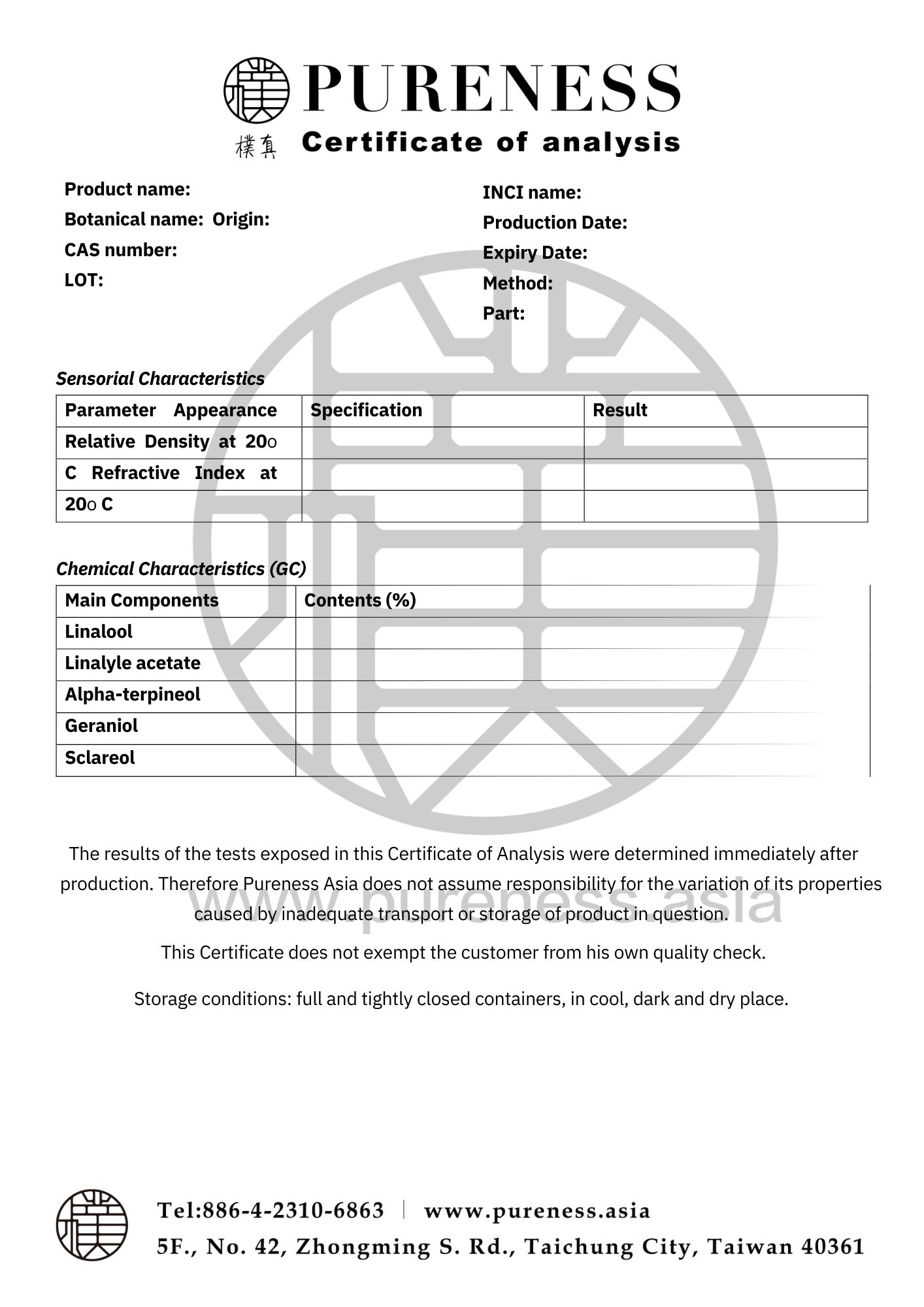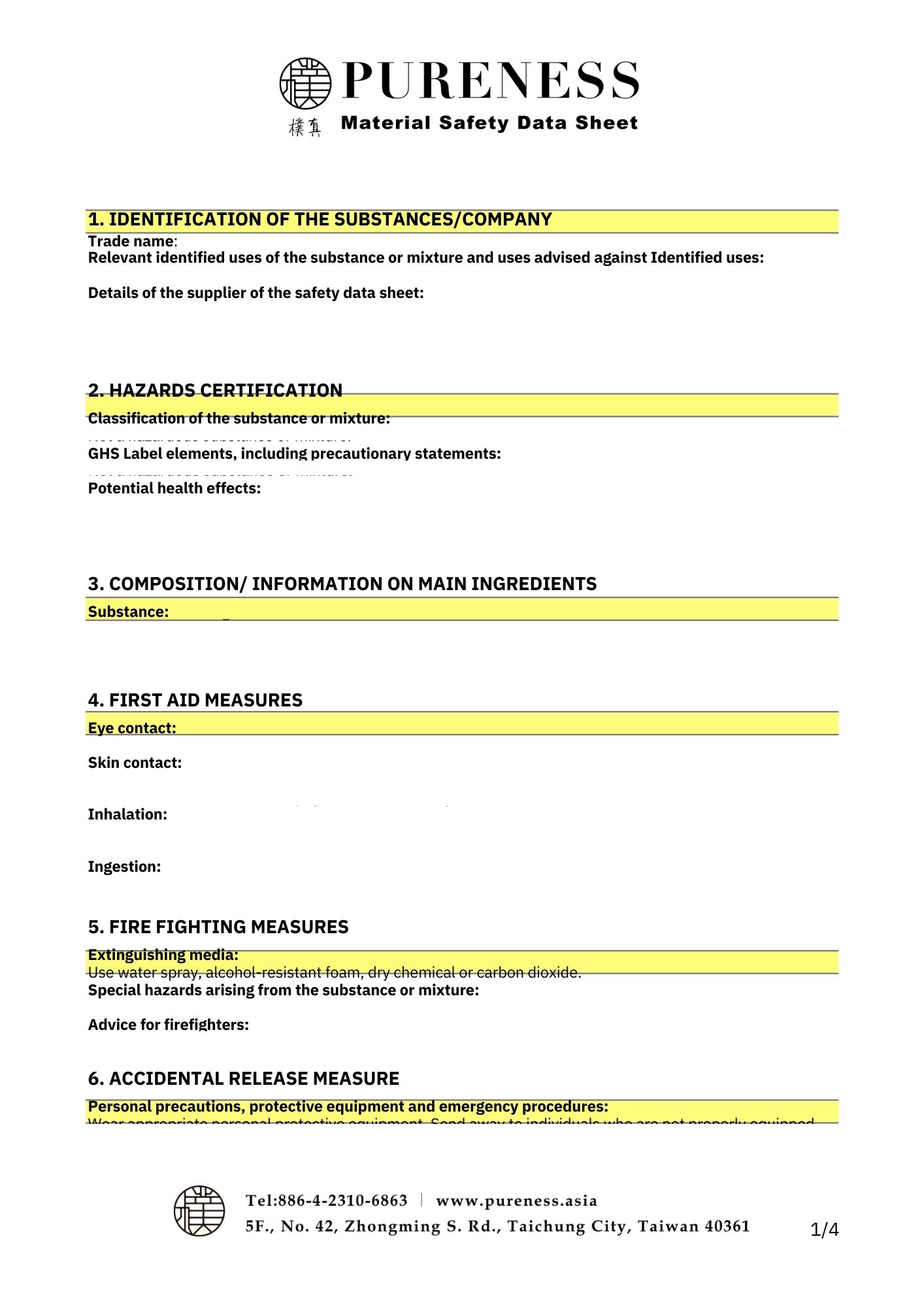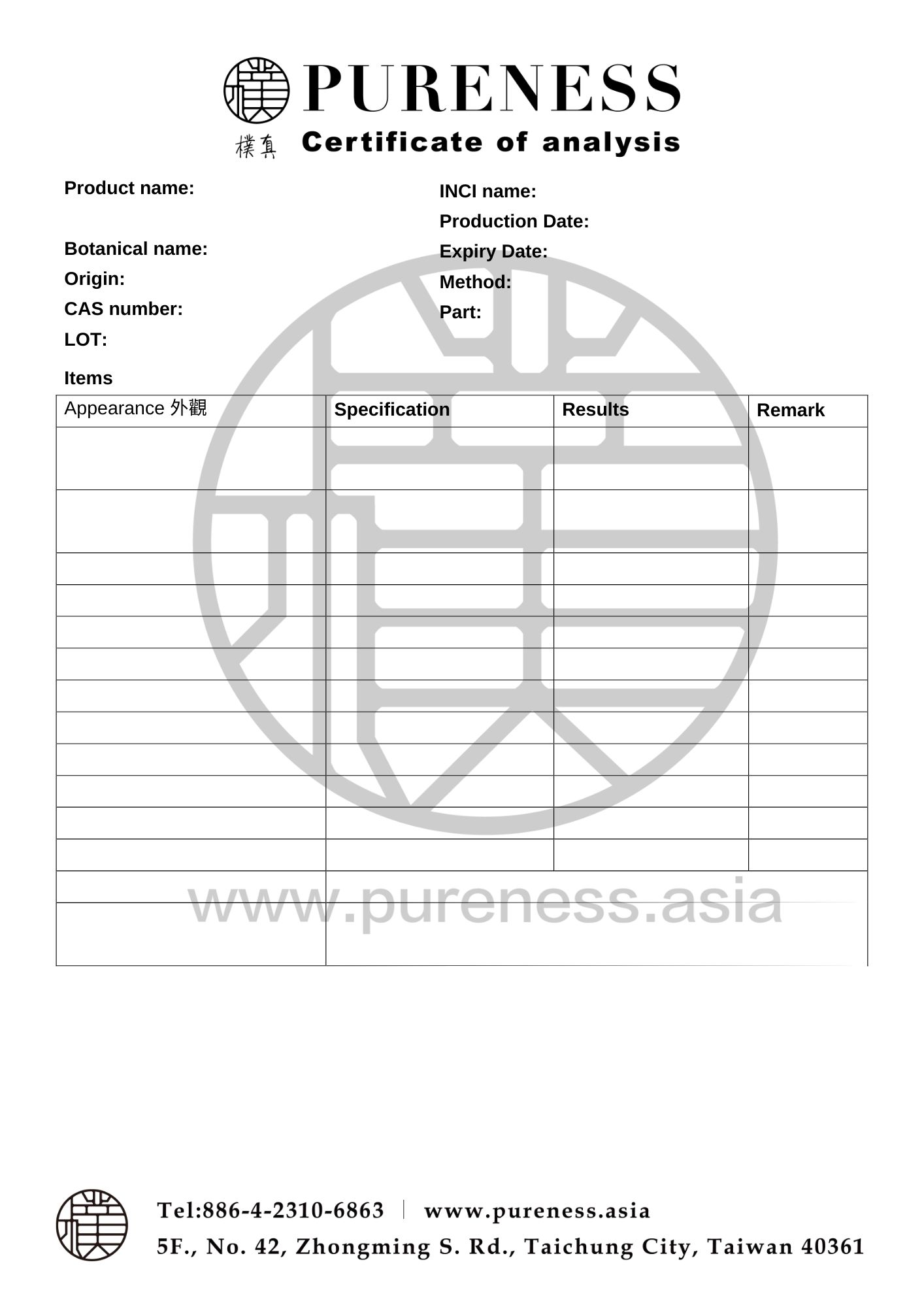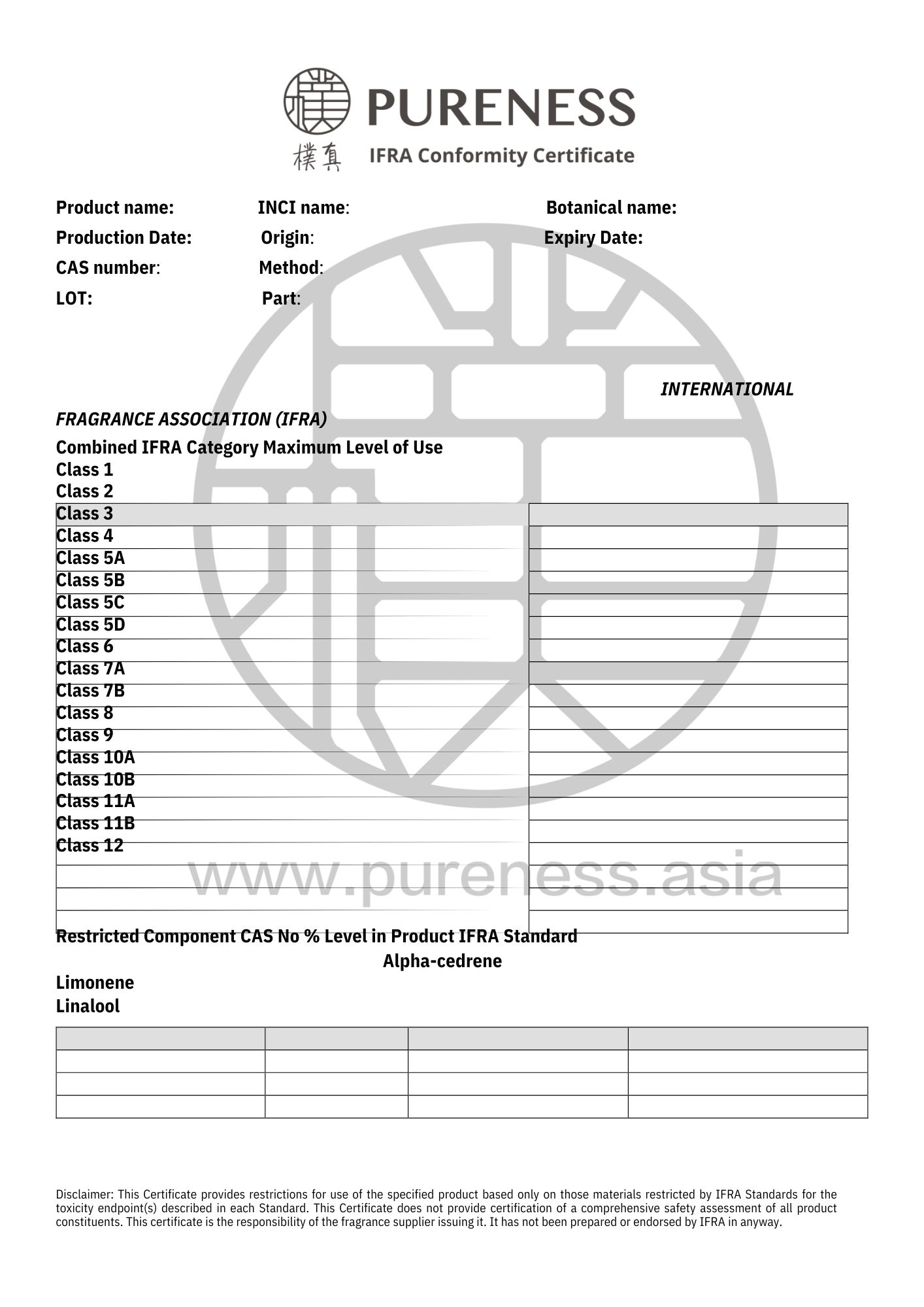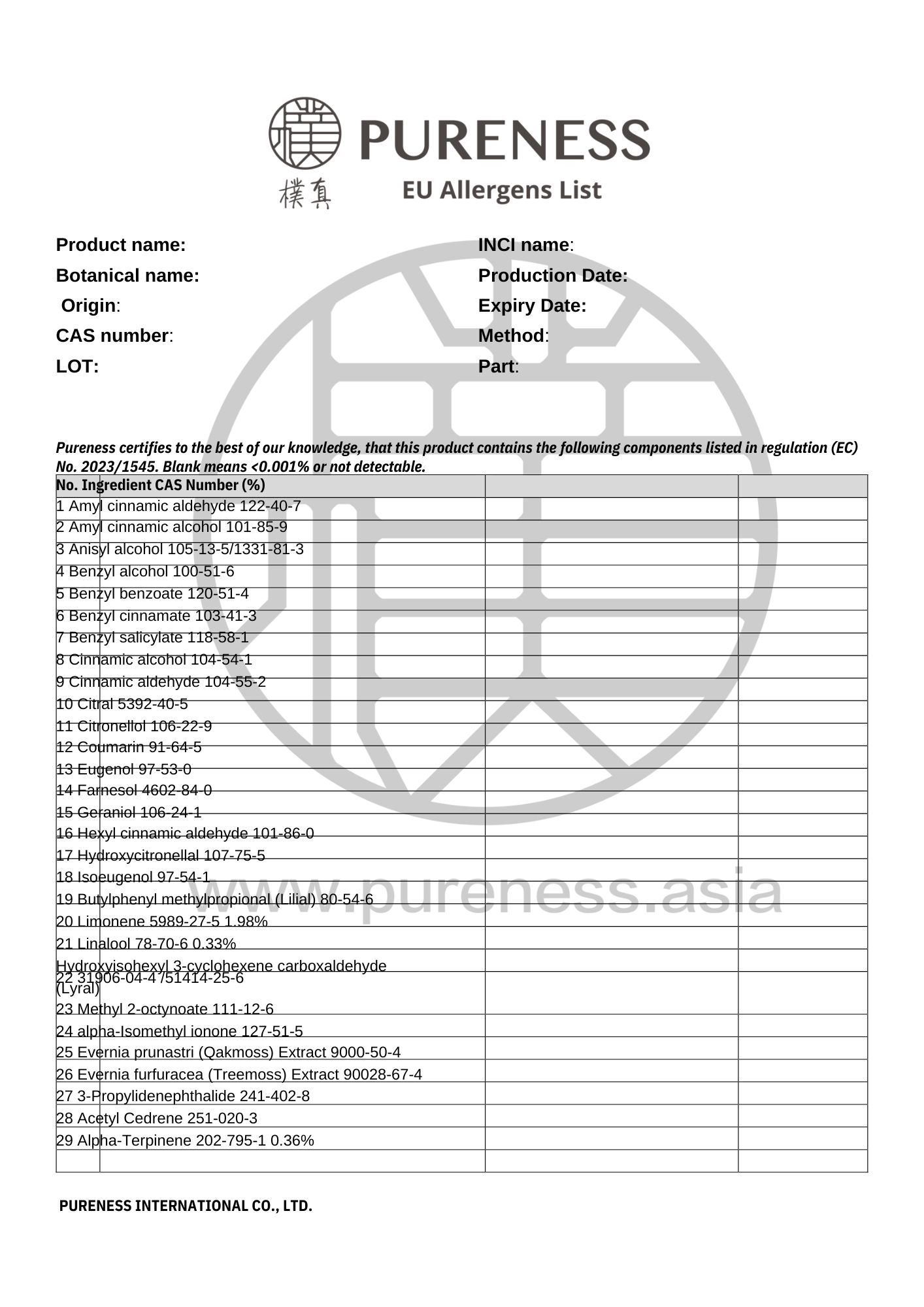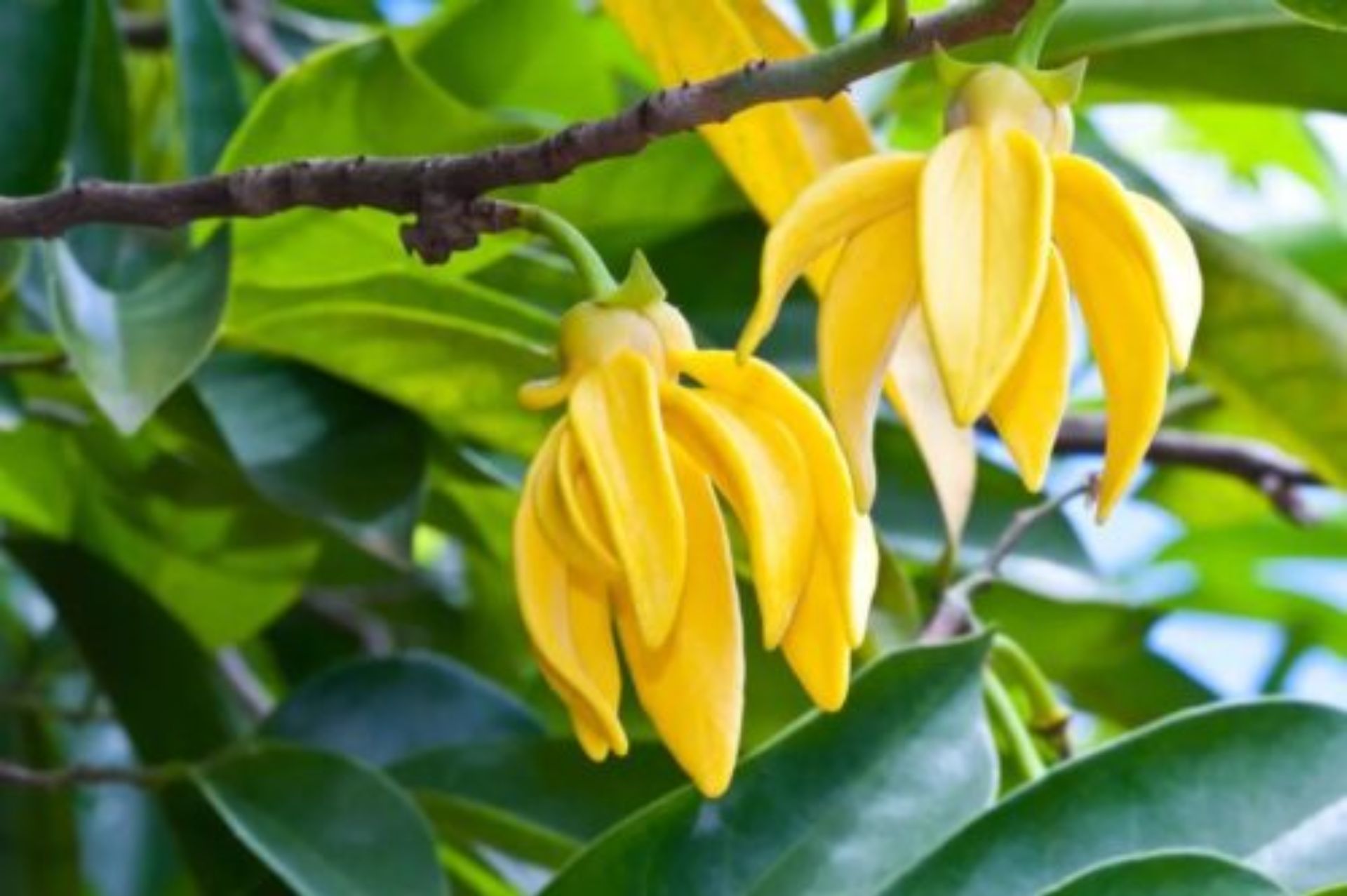
Ylang Ylang
Scientific name|Cananga odorata
Origin|India
Classification|Flower series
Specifications|500g-25kg Please contact sales for details
Extraction part|Flower
Extraction method | Distillation
Plant family|Annonaceae
Aroma|A rich, sweet aroma with a tropical flair
▎Essential Oil Introduction
Evolving from a Philippine dialect, the term refers to flowers swaying gently in the breeze. In Malay, it means "the flower of flowers." The tropical climate of the Kalur region, influenced by air masses, results in an annual average temperature that is 3 to 8°C higher than other regions at the same latitude, leading to an exceptionally rich biodiversity. This also enhances the unique fragrance and versatile uses of Ylang Ylang.
Ylang Ylang's graceful branches sway with the wind, and its yellow flowers nestled within emit an intense, rich fragrance. Often called the "perfume tree," Ylang Ylang is highly favored by perfumers. Its essential oil is extracted from the flowers through a special process known as fractional distillation, which occurs over time. The oil is categorized into grades based on the distillation order: Extra, Grade One, Grade Two, and Grade Three.
▎Component Analysis
|Main component: Phenyl esters, terpenols
Ylang Ylang essential oil contains a rich diversity of aromatic molecules, with a high proportion of phenyl esters such as benzyl acetate and benzyl benzoate. It also includes terpenols like farnesol and linalool, small amounts of esters such as geranyl acetate, sesquiterpenes like farnesene and caryophyllene, and trace amounts of indole. This complex composition offers deep calming and relaxing effects, providing significant benefits for both mind and body.
Phenyl esters can be categorized based on the position of the phenyl group, either at the acid or alcohol end, influencing their properties. The unique structure of the benzene ring, with its resonance-stabilized double bonds, makes these compounds highly stable. As a result, they linger longer in the body and resist easy metabolism, contributing to the long-lasting fragrance, which tends to be in the middle to base notes.
|Component 1: Terpinen-4-ol
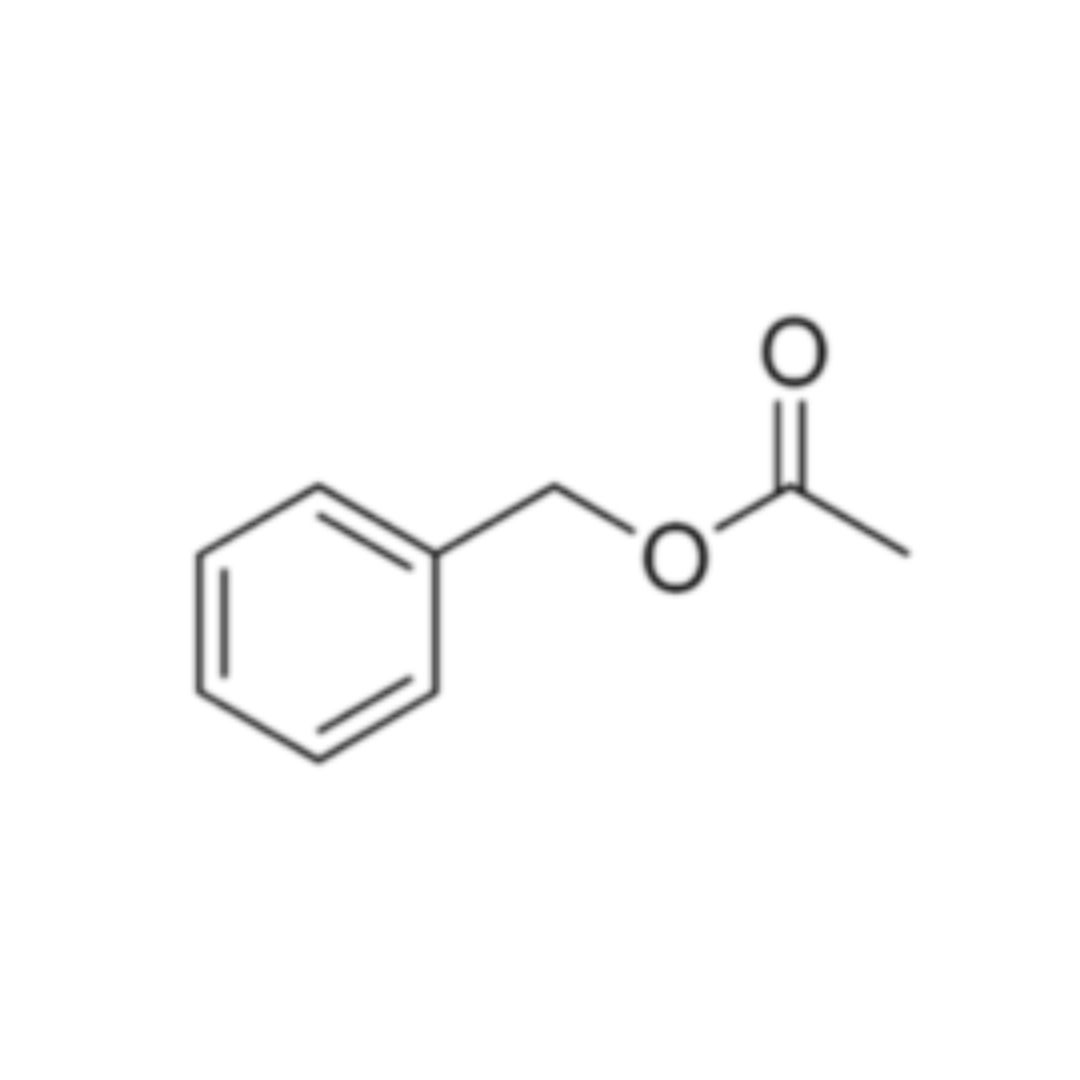
▸ Terpinen-4-ol is a colorless, oil-like liquid with a distinctive aroma similar to jasmine. It is nearly insoluble in water but dissolves in organic solvents such as ethanol and ether.
|Component 2: Benzyl Benzoate
|Component 3: Farnesol
|Ylang Ylang Comparison

|Raw Material Certifications
To obtain relevant certification information, please contact us on WhatsApp.
▎References
- .Traditional Uses, Phytochemistry, and Bioactivities of Cananga odorata (Ylang-Ylang). Evidence-Based Complementary and Alternative Medicine / 2015
- K. Lee, J.-H. Lee, S.-I. Kim, M. H. Cho, and J. Lee, “Anti-biofilm, anti-hemolysis, and anti-virulence activities of black pepper, cananga, myrrh oils, and nerolidol against Staphylococcus aureus,” Applied Microbiology and Biotechnology, vol. 98, no. 22, pp. 9447–9457, 2014.
- T. Matsumoto, S. Nakamura, S. Nakashima et al., “Lignan dicarboxylates and terpenoids from the flower buds of Cananga odorata and their inhibitory effects on melanogenesis,” Journal of Natural Products, vol. 77, no. 4, pp. 990–999, 2014.
- Duke J, 2014. Dr. Dukes Phytochemical and Ethnobotanical Databases online resource. Beltsville, USA: National Germplasm Resources Laboratory .
- FAO EcoCrop, 2014. Eco-Crop Online Database. Rome, Italy: Land and Water Development Division, Food and Agricultural Organization of the UN (FAO).
- M. Brokl, M.-L. Fauconnier, C. Benini, G. Lognay, P. du Jardin, and J.-F. Focant, “Improvement of ylang-ylang essential oil characterization by GC×GC-TOFMS,” Molecules, vol. 18, no. 2, pp. 1783–1797, 2013.
- K. R. Goodrich, “Floral scent in Annonaceae,” Botanical Journal of the Linnean Society, vol. 169, no. 1, pp. 262–279, 2012.
- C. Benini, G. Mahy, J. P. Bizoux et al., “Comparative chemical and molecular variability of Cananga odorata (Lam.) Hook. F. & Thomson forma genuina (ylang‐ylang) in the Western Indian Ocean Islands: implication for valorization,” Chemistry & Biodiversity, vol. 9, no. 7, pp. 1389–1402, 2012
- K. Caballero-Gallardo, J. Olivero-Verbel, and E. E. Stashenko, “Repellent activity of essential oils and some of their individual constituents against Tribolium castaneum herbst,” Journal of Agricultural and Food Chemistry, vol. 59, no. 5, pp. 1690–1696, 2011.
- G. A. Burdock and I. G. Carabin, “Safety assessment of Ylang-Ylang (Cananga spp.) as a food ingredient,” Food and Chemical Toxicology, vol. 46, no. 2, pp. 433–445, 2008.
- H. I. Manner and C. R. Elevitch, Cananga odorata (ylang-ylang), Species Profiles for Pacific Island Agroforestry, 2006.
- T.-J. Hsieh, F.-R. Chang, and Y.-C. Wu, “The constituents of Cananga odorata,” Journal of the Chinese Chemical Society, vol. 46, no. 4, pp. 607–611, 1999.
- E. E. Stashenko, W. Torres, and J. R. M. Morales, “A study of the compositional variation of the essential oil of ylang-ylang (Cananga odorata Hook Fil. et Thomson, forma genuina) during flower development,” Journal of High Resolution Chromatography, vol. 18, no. 2, pp. 101–104, 1995.
- E. Stashenko, J. R. Martinez, C. MacKu, and T. Shibamoto, “HRGC and GC-MS analysis of essential oil from Colombian ylang‐ylang (Cananga odorata Hook fil. Et Thomson, forma genuina),” Journal of High Resolution Chromatography, vol. 16, no. 7, pp. 441–444, 1993.
- Deroin T, 1988. Floral biology of an Annonaceae introduced into the Ivory Coast: Cananga odorata. (Biologie florale d'une Annonacée introduite en Côte d'Ivoire: Cananga odorata (Lam.) Hook f. & Thoms.). Bulletin du Muséum National d'Histoire Naturelle. Section B, Adansonia. 10 (4), 377-393.
|Some images sourced from the internet. Contact for copyright removal|
